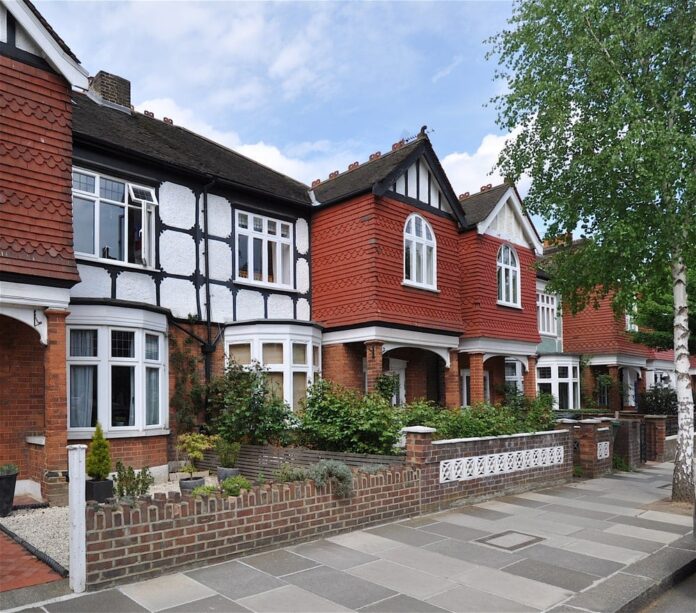The bounce back in the prime London lettings market gathered pace in September. Average rental values rose on a quarterly basis by the largest amount in a decade in prime central (+2.8 per cent) and prime outer London (+2.6 per cent), as the below chart shows.
The number of tenancies started in September was also the highest monthly total in the last ten years.
We have explored how a ‘sprint for stock’ has driven activity in the lettings market as universities return, offices re-open and overseas tenants begin to arrive in greater numbers. As a result, the biggest increases in rents over the three months to September included Canary Wharf (+6.1 per cent), Wapping (+5.6 per cent), Aldgate (+7 per cent) and Islington (+6.9 per cent).
The number of market valuation appraisals, which is a measure of supply, fell 25 per cent between January and September. It was the result of owners capitalising on a resurgent sales market during the stamp duty holiday and the disappearance of short-let properties from the long-let market as staycation rules were relaxed.
Supply is so tight in some locations that prospective tenants have stayed in hotels while they look for the right property.
Gary Hall, head of lettings at Knight Frank, commented, “With a continued lack of new properties, the volume of prospective tenants looking to rent is still very high. It has got to the point that some need to look at different options if they are unable to find the right property, including short-lets and longer-term hotel stays.”
Demand remains strong although it calmed slightly in September as many tenants had already put plans in place ahead of the academic year. Even so, the number of new prospective tenants registering was still 56 per cent higher than September last year.
Rental values are on track to end the year flat, as we have previously discussed. The increases this year mean tenants who found bargains in the depths of the pandemic may need to adjust their expectations as tenancy agreements come up for renewal, said Hall.
David Mumby, head of prime lettings at Knight Frank, commented, “There has never been a busier lettings market at any time over the last 20 years, it feels like we have been through a five-year cycle in 18 months. We are seeing competitive bidding across Prime Central London markets, with new tenants mainly being ‘London leavers’ who now are returning to the office, and international students who are still agreeing properties purely based on virtual viewings. There is a chronic shortage of stock, especially for the most popular property types; family houses and pied-à-terres.”
Sales – Supply still trails demand in prime London sales markets
Supply shortages have become a feature of the global economy as the pandemic tentatively enters exit mode in the UK. It is proof that turning off activity is more straightforward than turning it back on again.
It is no different in the UK property market, where a vicious circle of low supply has affected prices and transaction volumes this year.
In London, demand continues to surge this autumn as supply plays catch up. Excluding 2020, the number of new prospective buyers registering in London was 27 per cent above the five-year average in the third quarter.
Other metrics were equally positive given the potential for a post-stamp duty holiday lull. The number of offers accepted was 51 per cent higher and total exchanges were up 10 per cent, Knight Frank data shows. However, on the supply side, the number of new sales instructions was 21 per cent down.
Tom Bill, head of UK residential research at Knight Frank, commented, “The re-balancing of supply and demand is proving to be a gradual process. More vendors will come forward as supply builds, meaning it won’t happen overnight. Meanwhile demand is only getting stronger as international travel rules are relaxed.”
As a result, the ratio of demand versus supply was at its third highest level in September since the start of 2019, as the chart shows.
The high-point came in January 2020 during the so-called Boris Bounce following the December 2019 general election, when demand surged. The market shutdown three months later produced a similar distortive effect as vendors retreated.
Prices continued on the same trajectory of the last six months. There was an annual increase of 0.7 per cent in prime central London in September and a rise of 3.1 per cent in prime outer London. The race for space is lifting prices in the suburbs while the absence of international buyers means prices in PCL are in a holding pattern.
Even though quarantine rules were relaxed from this week, it is unlikely to signal business as usual just yet. The main reason is timing. The fact the school year has already started means some overseas buyers will wait until next year. Elsewhere, a number of high net worth individuals are taking advantage of the relaxed travel rules, which is benefitting some markets more than others.
For example, the number of new prospective buyers registering in Mayfair and Knightsbridge in September was 11 per cent higher than the same month last year. Meanwhile, across the whole of PCL, there was an 8 per cent decline. It underlines how the prime London sales market is returning to normal conditions one step at a time.
Credit: Source link













